How to Sell Books on Amazon in 2024: A Beginner’s Guide
I’ll show you how to get started with selling books on Amazon, from finding inventory to listing your books and fulfilling orders.
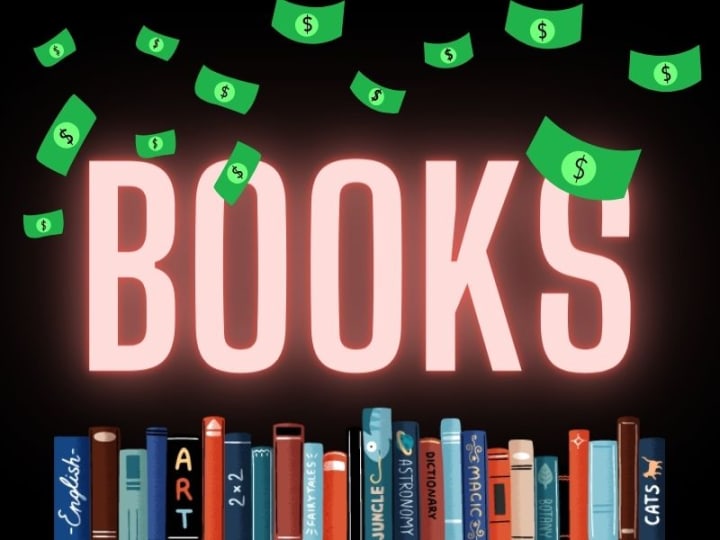
Note: this article was originally published on my Medium.com page.
I love reading books. I love reading about books. I love teaching my students about books. But, I also secretly love selling books!
I sell used books on Amazon for several reasons:
To make some extra income. On average, I make $100 per month. I list about 10 new books each month. Note that with Amazon, the more you list, the more the algorithm drives traffic to your listings and increases sales rates.
I discover tons of new authors and subjects that’d simply be outside my sphere of interest. That fuels my love of reading and helps expand my knowledge.
Sourcing books gives me some “me time.” I have a roster of places I go to, and there’s just something calming about spending 20–30 minutes in a thrift store or a library.
So, let me break down my process for you. I’ll show you how to get started with selling books on Amazon, from finding inventory to listing your books and fulfilling orders.
Setup a seller account and download the seller app
I’m starting with the account stuff before getting into book sourcing simply because you’ll need an active account on the Amazon app to make use of the live book search function. You can use the app to scan barcodes and see how much a book is worth. That’s crucial to the entire operation.
So, to set up an account, go to Amazon Seller Central:
Register a new account using your email address and provide some basic information, such as your name, address, phone number, and tax information. You will need to pass verification. But in principle, you should get accepted.
Once your account is up and running, download the Amazon seller app for Android or iPhone, open it, and tap on the “Add a Product” tab. The next screen should look something like this:
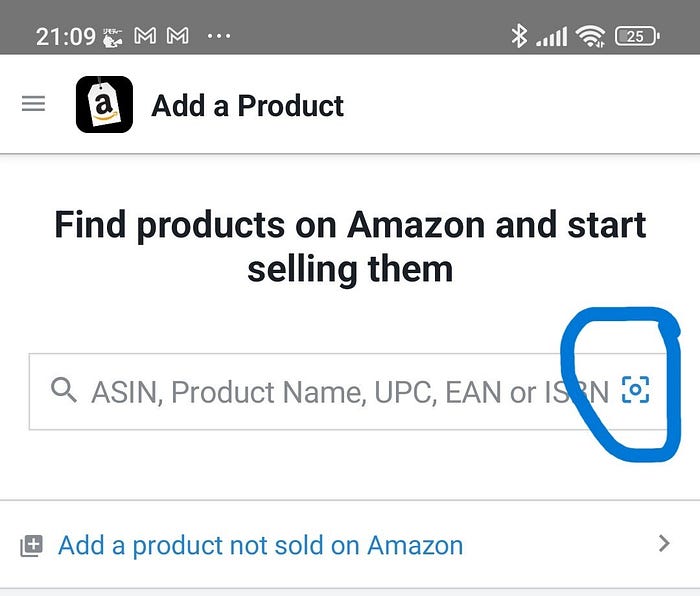
Note the little scanner icon in the search box. That’s going to activate your phone camera and allow you to scan barcodes.
Once you scan a barcode, you’ll see something like this:
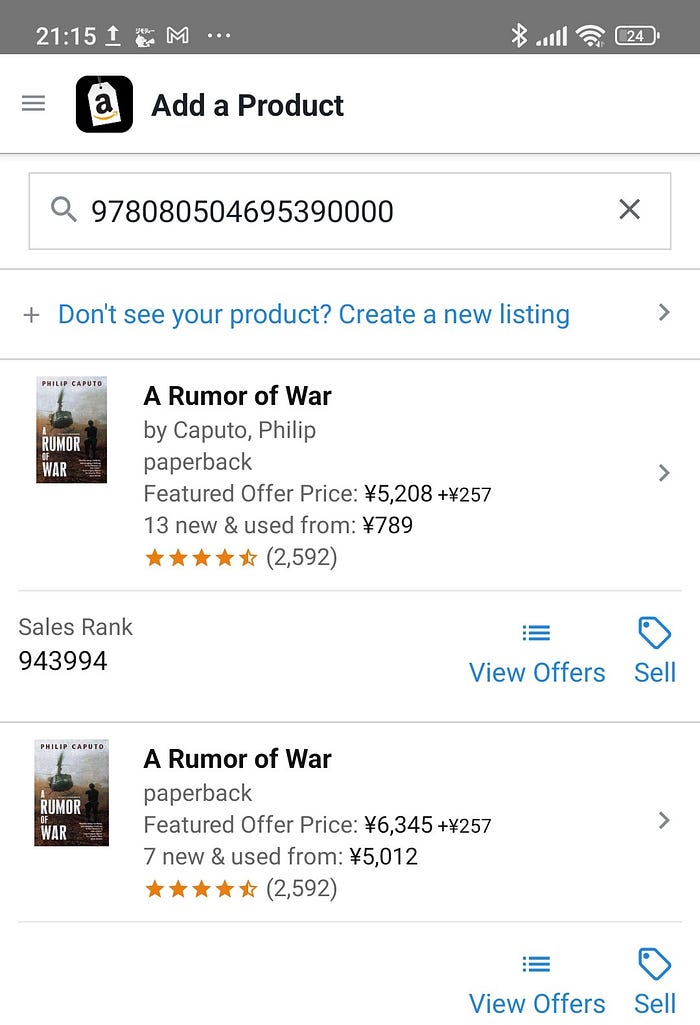
This screen has several important bits of information. First, it shows you how many competitors are selling the same item and what the lowest price is. In this case, there are 13 new and used items on sale, and the cheapest one is ¥789 ($5). If you tap the “view offers” tab, you’ll see each of those 13 listings:
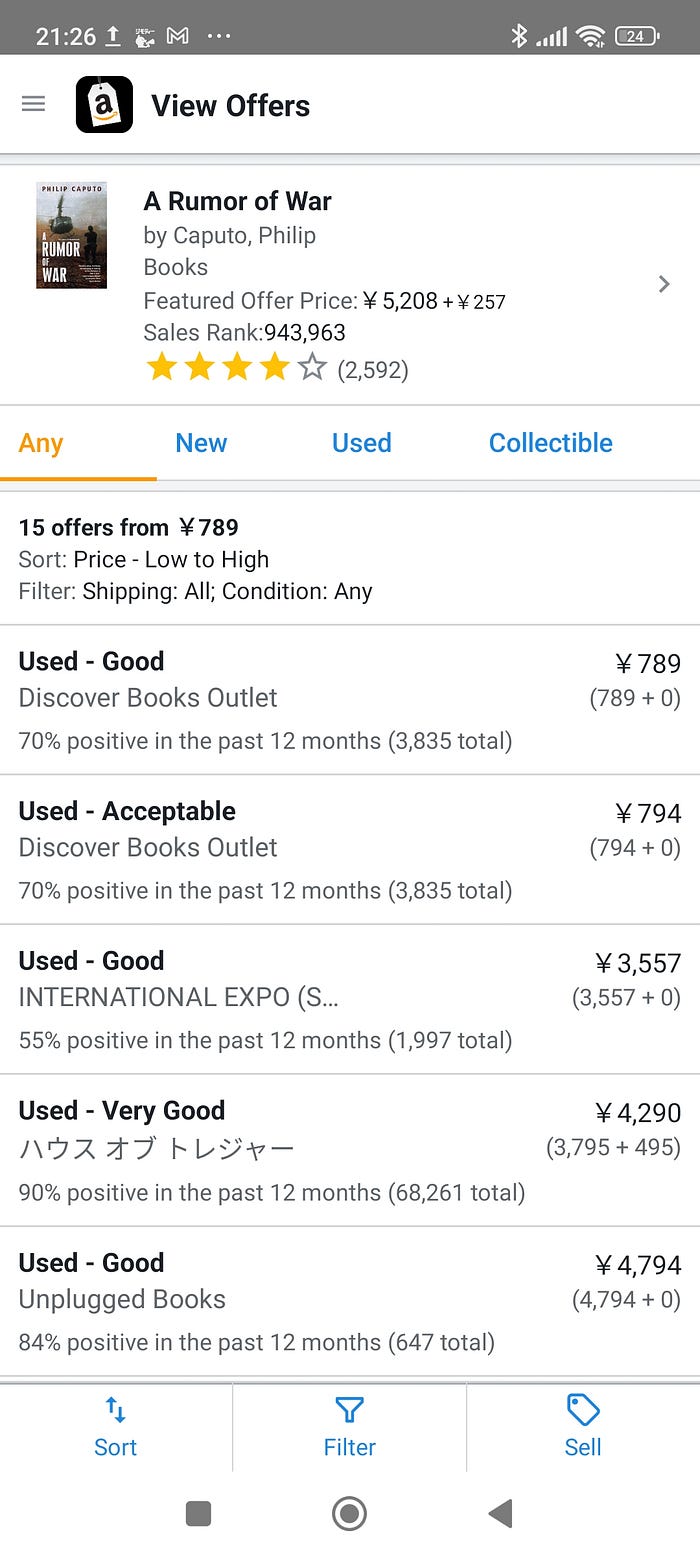
This gives you further information, such as book condition and shipping fees for each listing.
Based on this data, you can judge whether or not the book is worth sourcing and listing. In this case, I would pass. $5 after Amazon fees, packaging, and shipping costs would leave me with next to nothing in return.
I typically only list books that I can sell for over $20. Anything below that is not worth the effort.
One more thing before we move onto sourcing. The benefit of the Amazon app is that it’s free. But if you want to speed up your operation, you should look into third-party Amazon scanning apps. Most of them are paid. There are a few free apps, among which Keepa is by far the best. It gives you more sales data about each item and shows you relevant data on a single screen.
Another trick to save time, which requires a small investment, is to get a Bluetooth barcode reader. The KDC200i 1D Laser Bluetooth Barcode Scanner, for example, will scan a barcode by just hovering over it. You can have it automatically trigger your scanning app. This significantly saves time when sourcing books.
Personally, I don’t put in enough effort into this side hustle to warrant buying a barcode reader, but if I wanted to up my game, I’d definitely consider it.
Finding Books to Sell on Amazon
Now that the account stuff is out of the way, let’s talk about sourcing stock. There are several ways to find used books, depending on your budget, time, and goals. Here are some of the things I do and a couple of others I want to try this year when I get time.
Sell your own books. This is the easiest and cheapest way to start. Look around your house and see if you have any books that you no longer need. Ask your friends and family if they have any books they want to part with too. This only really works at the beginning, but it’s a good place to start.
Library sales and freebies. Do a Google Maps search for public libraries in your vicinity. I have three within easy driving distance. They all have free book corners. One of them also has a book sale corner. Another runs a book sale event twice a year. The plus side of libraries is that books are often free or very cheap. The downside is that the books will usually be stamped. Make sure you state that in your Amazon listings. You can just state that the book is “ex-libris.”
Thrift stores and charity shops. If you’re in the UK, then charity shops are a no-brainer. In the US, Goodwill-type stores will be your friend. Here in Japan, I visit second-hand stores known as “recycle shops.” I recommend setting up a folder in Google Maps to save all the locations you visit. Keep a spreadsheet too with dates of visits and items purchased. That way, you can manage rotation more easily.
Bulk lots in online auctions. You can source books on eBay and other auction sites. Here in Japan, the main outlet is Yahoo!Auction. If you buy a bulk lot, you will a) need space to store the inventory and b) be willing to take a risk on your investment. Many of the books will have little resale value. So it’s a gamble. The more you sell books, though, the more you’ll learn which categories sell well. Non-fiction, technical books and academic textbooks, for example, can be good.
Other online sources. You can also find books on websites like Craigslist and Facebook Marketplace. Keep an eye on sites like Freecycle for people getting rid of books.
Garage sales and car boot sales. This is a seasonal (spring-summer) activity and not something I can do personally here in Japan since garage sales aren’t really a thing here, but if you’re based in the US, then it’s definitely worth looking into. Prices are cheap and negotiable. If you’re based in the UK, then look into car boot sales as a similar option.
Okay, it kind of goes without saying, but make sure you keep an eye on book quality too. When you list a book on Amazon, you will be asked to ascribe a quality rating to it: new, like new, very good, good, or acceptable. I often downgrade my quality ratings to avoid conflicts with buyers. So if I find a book that’s “like new” to me, I will often list it as “very good.” I have had a couple of disputes over book quality, where buyers questioned the rating of the book they received. I offered refunds to avoid negative feedback. And feedback on your Amazon seller page is crucial. It can make or break your sales success.
Selling books on Amazon
Here’s a view of some recent books I sourced here in Japan. I use the Kallax shelving unit from Ikea to organize my inventory.
Once you have your books ready to sell, you need to list them on Amazon. There are two ways to do this:
Sell as an individual seller. This is the simplest and cheapest way to sell books on Amazon, especially if you only have a few books to sell. You can create a free seller account and list your books one by one. You only pay a $0.99 fee per item sold, plus other selling fees. However, you are responsible for storing, packing, and shipping your books to the customers, and you have limited access to some features and tools.
Sell as a professional seller. This is the more advanced and expensive way to sell books on Amazon, especially if you have a large number of books to sell. You can create a professional seller account and pay a $39.99 monthly subscription fee, plus other selling fees. However, you get access to more features and tools, such as bulk listing, inventory management, reports, and advertising. You can also use Amazon’s Fulfillment by Amazon (FBA) service, where you send your books to Amazon’s warehouses and let them handle the storage, packing, and shipping for you.
To list your books on Amazon, you need to provide some information, such as:
ISBN. This is the International Standard Book Number, a unique code that identifies your book. You can find it inside the dust jacket or on the barcode of your book. If your book was printed before 1970, it may not have an ISBN. In that case, you can request an exemption from Amazon to sell it without an ISBN.
Condition. This is the physical state of your book that I mentioned a moment ago. You need to give each book a condition rating. I also advise describing the condition of your book honestly and accurately, following Amazon’s condition guidelines. The more upfront you are about the book’s condition, the less likely you are to have customer feedback trouble. For example, a new book should be in perfect condition, with no marks, stains, or tears. A used book should have minimal signs of wear and tear, such as creases, folds, or highlights. A collectible book should have some special features or qualities, such as a first edition, a signed copy, or a rare cover. I recommend keeping a simple text file on your computer with generic phrases that describe your books. That way, you can just copy and paste sentences into the listing.
Price. This is the amount of money you want to charge for your book. You need to set a competitive and profitable price, taking into account factors such as the demand, the supply, the fees, and the shipping costs. You can use a book scanner app or a repricing tool to help you find the optimal price for your book based on the current market data and your desired profit margin. I use the Amazon Seller App, and I look at the cheapest available book for sale. I then usually try to undercut that price. Be aware that prices change all the time in the marketplace as users update their items. So it’s good to turn on notifications in your Amazon seller app when an inventory item gets outpriced. You can then go in and lower your price accordingly.
Images. I typically skip uploading images because it takes too much time. If it’s an expensive or rare book, I usually include 3 or 4 photos.
Listing frequency
I mentioned this above, but if you want to take it seriously, you should aim to list at least one book every day. Or several books five days a week. This really helps boost traffic to your store. If you leave big lapses between listings, the algorithm downplays the importance of your listings.
So when you source your books, it’s good practice to create a to-be-listed pile separate from your listed pile. I know that's self-evident, but you’d be surprised at how quickly stockkeeping gets out of control!
Fulfilling Orders on Amazon
The final step to selling books on Amazon is fulfilling your orders. This means delivering your books to the customers who bought them. There are two ways to do this:
Fulfill by Merchant (FBM). This is the method where you handle the fulfillment yourself. You need to store, pack, and ship your books to the customers using your own materials and carrier. You also need to provide customer service, such as tracking information, refunds, and returns. This method gives you more control and flexibility over your fulfillment process, but it also requires more time, effort, and resources. This is what I do at the moment.
Fulfill by Amazon (FBA). This is the method where you let Amazon handle the fulfillment for you. You need to send your books to Amazon’s warehouses, following their preparation and labeling requirements. Amazon will then store, pack, and ship your books to the customers using their materials and carrier. Amazon will also provide customer service, such as tracking information, refunds, and returns. This method saves you time, effort, and resources, but it also costs you more fees and limits your control and flexibility over your fulfillment process.
Conclusion
I find selling books on Amazon enjoyable for the most part. Bear in mind that, for me, it’s more of a hobby than a reliable source of income. If I was really going to get into it as a business, I would definitely look into renting inventory space, sourcing items in bulk, using Amazon FBA, and potentially employing someone to do the scanning and listing. For me, that’s a step too far. Anyway, I hope this article is of help to someone out there looking to sell some books in 2024 and beyond. Good luck, and let me know how you get on!
Related How-tos
How to write a poem
This simple guide is a starting point for anyone interesting in writing poetry.

How to stay focused as a writer
Here are some simple tips on how to keep momentum while writing.
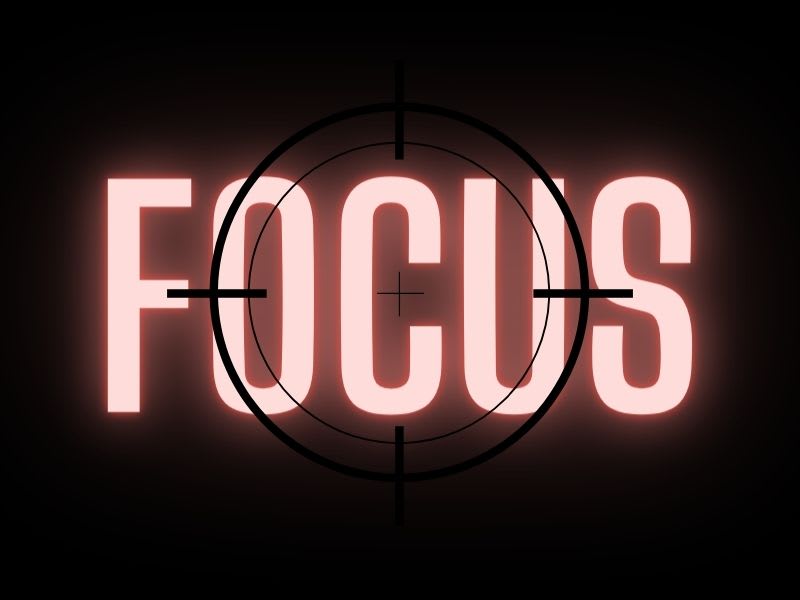
How to write a killer sentence
In this writing workshop, we go back to basics and ask what makes a good sentence.

